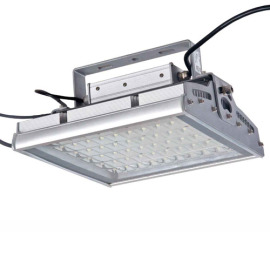 Recently, the Ministry of Industry and Information Technology formally issued China's semiconductor lighting integrated standardization technology system, which has released 54 standards, 73 standards that are under research and development, and 66 standards to be researched and formulated. The entire standard system has involved standards. Achieve 193 items.
Recently, the Ministry of Industry and Information Technology formally issued China's semiconductor lighting integrated standardization technology system, which has released 54 standards, 73 standards that are under research and development, and 66 standards to be researched and formulated. The entire standard system has involved standards. Achieve 193 items. It is reported that semiconductor light-emitting diodes (LEDs) are one of the most promising emerging industries in the world and are an important part of a new generation of information technology and two strategic emerging industries of energy conservation and environmental protection. In recent years, China's semiconductor lighting industry has made rapid progress, the level of technology has improved significantly, the industrial chain has been gradually improved, and the field of application has been expanding.
“From the manufacturing technology point of view, LED lighting products themselves are much more complex than traditional lighting fixtures, covering a wide range of industries such as semiconductors, lighting fixtures, and heat-dissipating materials, from the upstream substrate materials, epitaxy, chips, to device packaging and applications. The semi-conductor industry and the lighting industry are industries that intersect each other." Zheng Haowen, director of the National High-tech Enterprise Development LED Professional Committee, told reporters that China's LED manufacturing equipment is mainly in the low-end areas, and high-end industries rely on imports. China also urgently needs to formulate a sound industrial standard system to provide a strong impetus for the development of the industry.
According to the relevant person in charge of the Ministry of Industry and Information Technology, China’s semiconductor lighting integrated standard aims at serving and supporting the development of the semiconductor lighting industry, focusing on the formulation of devices, modules, light sources, and lighting standards, and collaboratively formulating epitaxial growth, chip manufacturing, device packaging, raw materials, and zero Components, lamps, accessory products, technical means, production preparation, inspection methods and other complete sets, system standards, the development of semiconductor lighting standards to regulate the development of the industry, and promote the healthy and sustainable development of China's semiconductor lighting industry.
According to reports, China's semiconductor lighting integrated standardization technology system is divided into general standards and materials and equipment, chips and devices, lighting equipment and systems 3 sub-systems, a total of 4 parts. General standards include semiconductor lighting terms, which play a role in harmonizing the production, circulation, and standardization of products in the semiconductor lighting technology field. The three sub-systems are divided according to the industrial chain, and each sub-system is further subdivided according to the product type.
Microwave PCB
microwave PCB`s is a type of PCB designed to operate on signals in the megahertz to gigahertz frequency ranges (medium frequency to extremely high frequency). These frequency ranges are used for communication signals in everything from cellphones to military radars. The materials used to construct these PCB`s are advanced composites with very specific characteristics for dielectric constant (Er), loss tangent, and CTE (co-efficient of thermal expansion).
High frequency circuit materials with a low stable Er and loss tangent allow for high speed signals to travel through the PCB with less impedance than standard FR-4 PCB materials. These materials can be mixed in the same Stack-Up for optimal performance and economics.
The advantages of using materials with a low X, Y and Z CTE is a resulting PCB structure that will remain extremely stable in high temperature environments while operating at up to 40 GHz in analog applications. This allows for the effective placement of very fine pitch components including, in some cases, bare die-attach. Additionally, the low CTE materials will facilitate the alignment of multiple layers and the features they represent in a complex PCB Layout.
Features
.CTEr = +40/+50 ppm per °C (low); Tg (glass transition temperature) is 280°C
.ER = 3.38/3.48 at 10.0 GHz
.ER is constant to 40.0 GHz
.ED (electro-deposited) copper only
.Layer-to-layer thickness control = +/- 0.001
.Fabrication costs are typical to slightly increased
Microwave PCB
Microwave PCB,Microwave Frequency PCB,Bare Copper Microwave PCB,High Frequency PCB
Storm Circuit Technology Ltd , http://www.stormpcb.com
